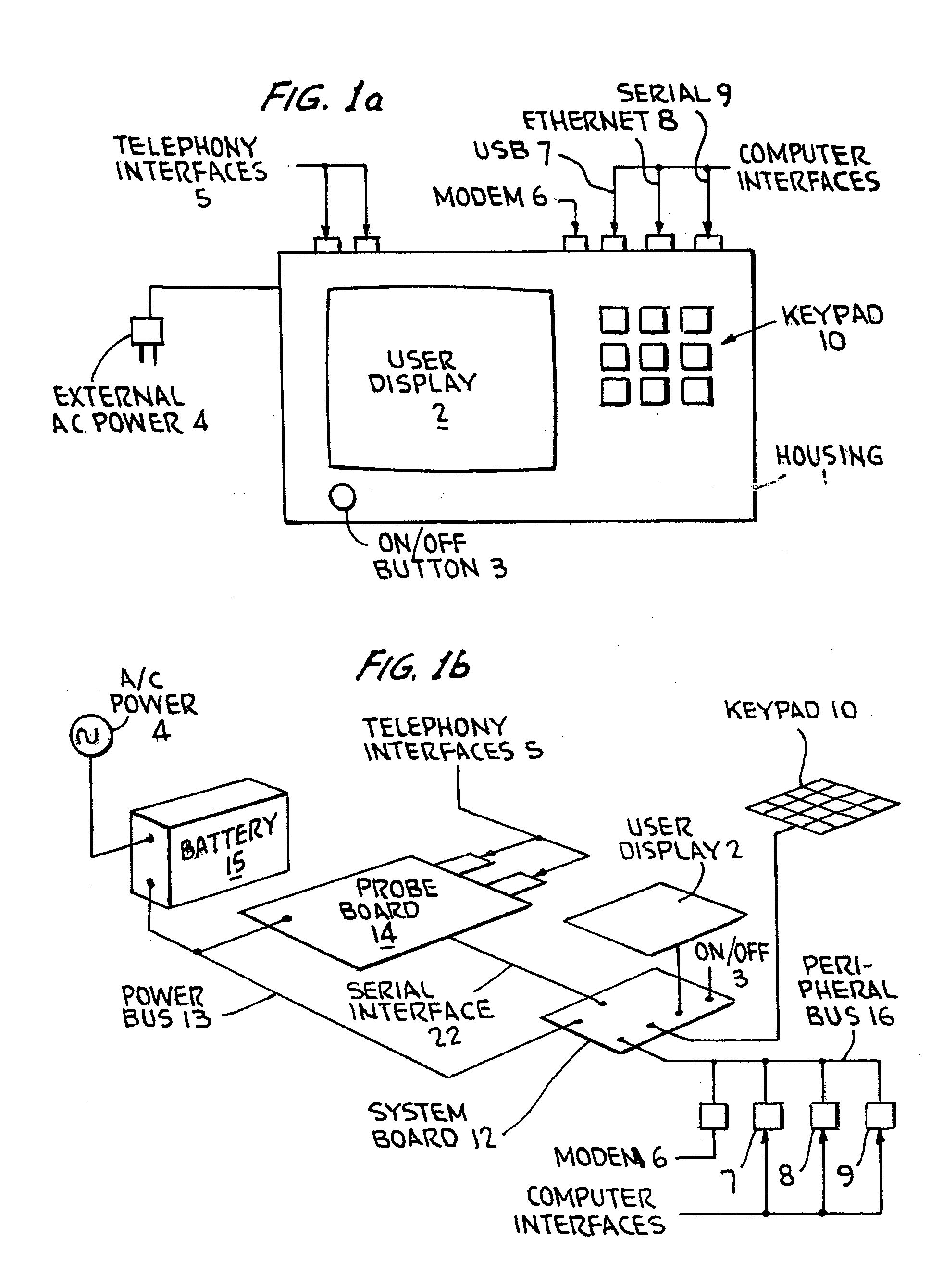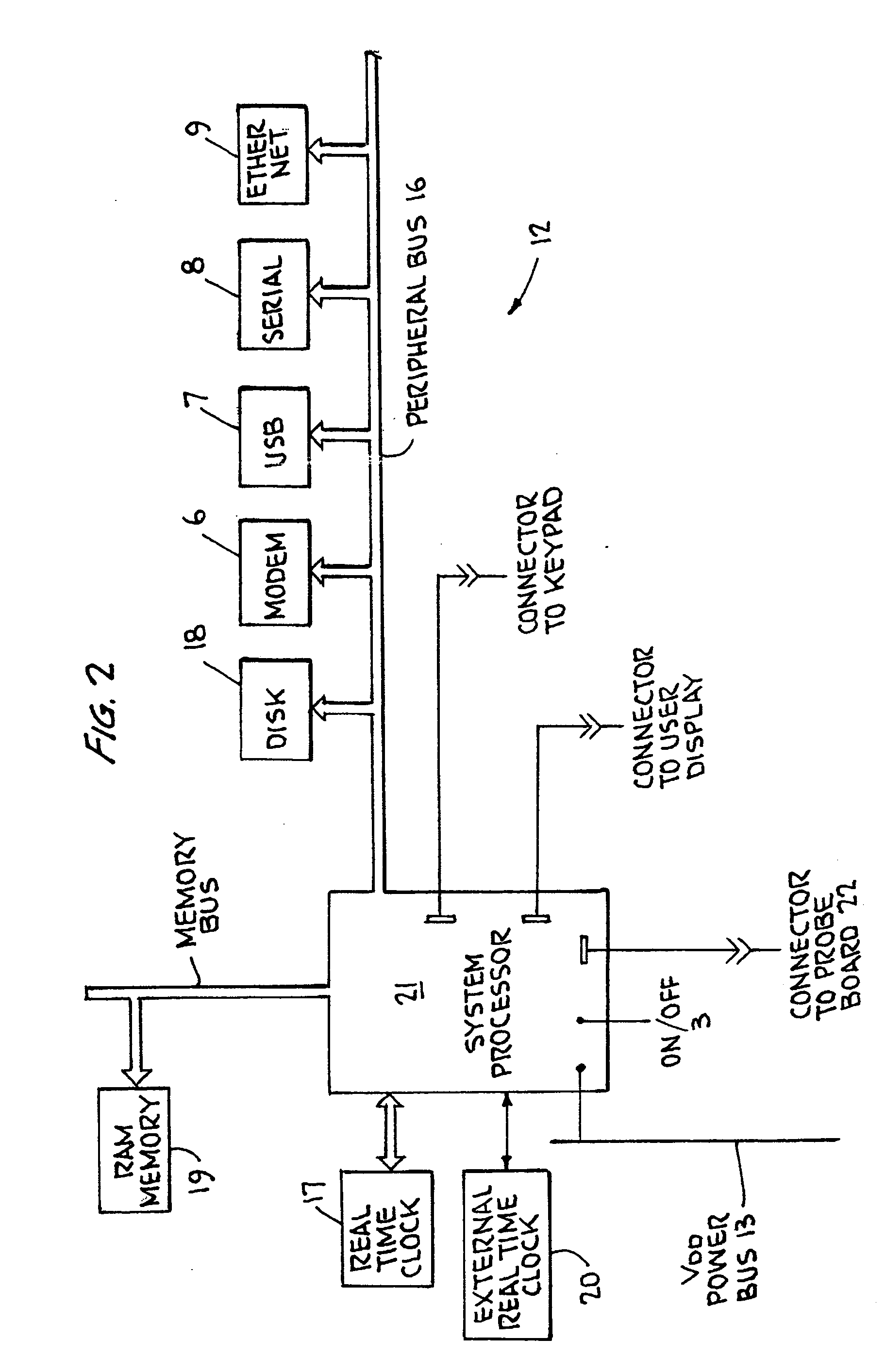Characterizing analog and digital telephone circuits and other types of wiring systems using frequency domain reflectometry (FDR)
a technology of frequency domain reflectometry and analog and digital telephones, which is applied in the direction of resistance/reactance/impedence, measurement devices, instruments, etc., can solve the problems of not being able to disclose prior art documents or products known to the inventor, and not being able to allow users of digital telephones
- Summary
- Abstract
- Description
- Claims
- Application Information
AI Technical Summary
Benefits of technology
Problems solved by technology
Method used
Image
Examples
Embodiment Construction
[0061] A simplified view of the overall system construction of one preferred embodiment of an instrument implementing the invention is shown in FIG. 1, comprising FIG. 1(a), an external view, and FIG. 1(b), an internal view. In this embodiment, the instrument is a portable battery-operated device that is activated by depressing the power button [3]. An external power pack [4] can be used to both charge the internal battery [15] and to power the unit for long periods of time.
[0062] When the power switch [3] is depressed, power flows via the power bus [13] into the system board [12] and the probe board [14]. The system board [12] in turn provides power to the user display [2] and the optional modem [6] and other computer interfaces [7], [8] and [9].
[0063] A schematic view of the system board of the same preferred embodiment is shown in FIG. 2.
[0064] Power-up initializes the system disk [18]. Factory microcode in the system processor, as is conventional, automatically loads initial ...
PUM
 Login to View More
Login to View More Abstract
Description
Claims
Application Information
 Login to View More
Login to View More - R&D
- Intellectual Property
- Life Sciences
- Materials
- Tech Scout
- Unparalleled Data Quality
- Higher Quality Content
- 60% Fewer Hallucinations
Browse by: Latest US Patents, China's latest patents, Technical Efficacy Thesaurus, Application Domain, Technology Topic, Popular Technical Reports.
© 2025 PatSnap. All rights reserved.Legal|Privacy policy|Modern Slavery Act Transparency Statement|Sitemap|About US| Contact US: help@patsnap.com



